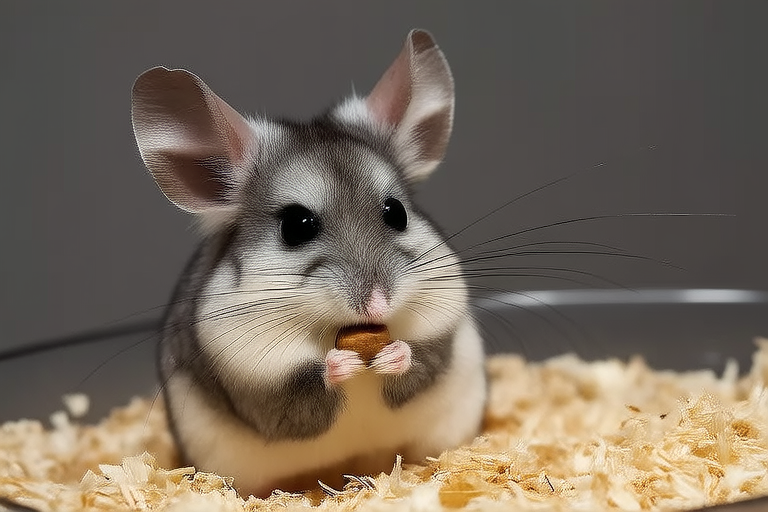Chinchilla Care: Everything You Need to Know Before Adopting One
Introduction
Welcome to the world of chinchillas! These adorable, fluffy rodents make wonderful pets for those who are prepared to meet their unique care requirements. Chinchillas are native to the Andes Mountains in South America and have been cherished as pets for decades due to their soft fur and engaging personalities. Before adopting one, it’s crucial to understand the responsibilities involved. This guide will cover everything from diet and habitat setup to grooming, exercise, health issues, and bonding techniques.
Chinchilla Diet
A balanced diet is essential for your chinchilla’s health. Their diet primarily consists of hay, which should be available at all times. Timothy hay is recommended for adult chinchillas, while younger ones may benefit from alfalfa hay. Fresh water must also be provided daily, preferably through a sipper bottle to prevent spills.
In addition to hay, you can offer commercial chinchilla pellets designed specifically for their nutritional needs. These pellets should be supplemented with small amounts of fresh vegetables such as carrots, broccoli, and dandelion greens. Avoid feeding them fruits, nuts, or seeds, as these can lead to obesity and dental problems.
Chinchillas are prone to digestive issues, so it’s important to introduce any new food gradually. Always consult with a veterinarian before making significant changes to their diet.
Habitat Setup
Creating a suitable living environment is vital for your chinchilla’s well-being. A spacious cage is necessary; aim for a minimum size of 36 inches wide by 24 inches deep by 24 inches high per chinchilla. The cage should have multiple levels and platforms to encourage climbing and jumping.
Use dust baths instead of water baths for grooming. Provide a shallow container filled with commercial chinchilla dust twice a week for about 15 minutes each time. Ensure the bath area is secure and easy to clean.
The cage should be placed in a quiet area away from direct sunlight and drafts. Maintain a temperature between 60°F and 70°F (15°C to 21°C) and humidity below 40%. Use bedding made from recycled paper or wood shavings, avoiding pine and cedar as they can cause respiratory issues.
Grooming Needs
Chinchillas require regular grooming to maintain their luxurious coats. Dust baths are the primary method of cleaning, but you can assist with brushing if needed. Use a soft-bristled brush to gently remove loose hairs during shedding season.
Regular nail trimming is necessary to prevent overgrowth, which can cause discomfort. Trim nails every few weeks, ensuring not to cut too close to the quick. If unsure, seek professional assistance from a veterinarian.
Chinchillas’ teeth grow continuously, so provide chew toys to help wear them down naturally. Wooden blocks, cardboard tubes, and untreated willow branches are excellent choices.
Exercise Requirements
Chinchillas are active creatures that need ample space to move around. In addition to their cage, provide supervised playtime outside the cage daily. A safe, enclosed area free from hazards is ideal.
Interactive toys can enhance mental stimulation and physical activity. Puzzle feeders, tunnels, and hanging toys promote exploration and problem-solving. Rotate toys periodically to keep your chinchilla engaged.
Ensure there are no sharp edges or toxic materials within reach. Supervise closely during playtime to prevent accidents.
Common Health Issues
Chinchillas are generally hardy animals, but certain health issues are more common. Dental problems, such as overgrown teeth, can lead to eating difficulties and pain. Regular veterinary check-ups and appropriate chew toys can help prevent these issues.
Respiratory infections can occur due to poor ventilation or exposure to cold drafts. Signs include sneezing, nasal discharge, and lethargy. Prompt treatment by a veterinarian is crucial.
Diarrhea can indicate gastrointestinal distress, often caused by dietary changes or stress. Monitor your chinchilla’s droppings and consult a vet if abnormalities persist.
To ensure your chinchilla stays healthy, maintain a clean living environment, provide proper nutrition, and schedule routine veterinary visits.
Tips for Bonding
Bonding with your chinchilla takes time and patience. Start by allowing them to get used to your presence without handling initially. Speak softly and move slowly near the cage to reduce stress.
Once your chinchilla feels comfortable, begin gentle interactions. Offer treats from your hand to build trust. Gradually increase handling sessions, always supporting their body firmly to avoid accidental falls.
Playtime outside the cage strengthens the bond further. Engage in activities like supervised play and interactive games. Positive reinforcement training can also be rewarding for both you and your pet.
Remember, each chinchilla has its own personality, so adapt your approach accordingly. Patience and consistency are key to forming a strong relationship.
Conclusion
Owning a chinchilla is a rewarding experience, but it comes with significant responsibilities. By understanding their dietary needs, setting up an appropriate habitat, maintaining grooming routines, providing sufficient exercise, addressing common health issues, and fostering bonding, you can ensure your chinchilla leads a happy and healthy life.
Research thoroughly and consult experts before making any decisions regarding adoption. With proper care and attention, your chinchilla will become a cherished member of your family.
